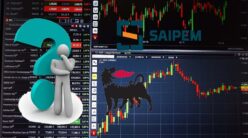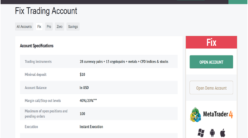In the world of investing, commodities have long been valued as a crucial asset class. They offer diversification benefits and serve as a hedge against inflation and geopolitical uncertainties. When considering commodities, investors often face the dilemma of choosing between commodity exchange-traded funds (ETFs) and physical commodities. Both options come with their own set of advantages and disadvantages, making it essential for investors to weigh their options carefully.
Understanding Commodity ETFs
Commodity ETFs are investment funds that track the performance of a specific commodity or a basket of commodities. They provide investors with exposure to commodity prices without the need to directly invest in physical assets. Commodity ETFs come in various forms, including those backed by futures contracts, physical holdings, or a combination of both.
One of the primary advantages of commodity ETFs is their accessibility—they can be bought and sold on stock exchanges just like any other security. Additionally, commodity ETFs offer diversification benefits, allowing investors to spread their risk across multiple commodities. Investors seeking exposure to commodities may wonder about the best ETF to buy now. While there isno one-size-fits-all answer, conducting thorough research and considering factors such as investment goals, risk tolerance, and market conditions can help identify suitable ETFs for your portfolio.
Commodity ETFs also come with their own set of drawbacks. One major concern is counterparty risk, particularly for ETFs backed by futures contracts. There is also the risk of tracking error, where the ETF’s performance may deviate from the underlying commodity prices due to various factors such as fees and management practices. Furthermore, investing in commodity ETFs does not provide investors with direct ownership of the underlying assets, which may limit their ability to benefit from certain market conditions.
Examining Physical Commodities
Physical commodities refer to tangible assets such as gold, silver, oil, and agricultural products. Investing in physical commodities involves purchasing and holding the actual assets, either in the form of bullion, barrels, or bushels.
One of the primary advantages of investing in physical commodities is direct ownership, which allows investors to have more control over their investments and potentially benefit from increases in commodity prices. Additionally, physical commodities can serve as effective hedges against inflation and geopolitical risks.
Investing in physical commodities also comes with its own set of challenges. Storage costs can be significant, particularly for bulky or perishable commodities. Illiquidity is another concern, as it may be difficult to quickly buy or sell physical commodities, especially during times of market volatility. Furthermore, physical commodities are subject to transportation and handling risks, which can impact their value and accessibility.
Risk Factors
Regardless of whether investors choose commodity ETFs or physical commodities, there are certain risk factors they need to consider. Market risk, liquidity risk, regulatory risk, and geopolitical risk can all impact the performance of commodity investments. Market risk refers to the volatility of commodity prices, which can be influenced by factors such as supply and demand dynamics, economic conditions, and geopolitical tensions.
Liquidity risk arises from the ease with which investors can buy or sell their investments without significantly affecting their prices. Regulatory risk pertains to changes in government policies or regulations that may impact commodity markets. Geopolitical risk encompasses factors such as conflicts, trade disputes, and natural disasters that can disrupt commodity supply chains and affect prices.
Investment Strategies
When investing in commodities, it is essential to have a clear investment strategy that aligns with your financial goals and risk tolerance. Whether you choose commodity ETFs or physical commodities, you should consider factors such as your investment horizon, portfolio diversification, and risk management techniques.
Short-term investors may focus on capitalising on short-term price movements, while long-term investors may prioritise building a diversified portfolio of commodities to hedge against inflation and other risks. Additionally, risk management techniques such as stop-loss orders and portfolio rebalancing can help mitigate potential losses and maximize returns.
Performance Analysis
Analysing the performance of commodity investments requires considering various factors, including historical performance, volatility, and correlation with other asset classes. Historical performance comparison can provide insights into how different commodities have performed over time and their potential for future returns.
Volatility analysis helps investors understand the level of risk associated with commodity investments and how it may impact their portfolios. Correlation analysis examines the relationship between commodity prices and other asset classes, such as stocks, bonds, and currencies, to determine their diversification benefits.
Market Trends and Outlook
The commodity markets are constantly evolving, influenced by factors such as economic conditions, technological advancements, and geopolitical developments. Understanding current market dynamics and recent developments in commodity ETFs and physical commodities is essential for making informed investment decisions. Additionally, assessing future growth prospects and challenges can help investors identify opportunities and mitigate risks in the commodity markets.
Conclusion
Commodity ETFs and physical commodities both offer unique opportunities and challenges for investors seeking exposure to the commodity markets. Understanding the pros and cons of each option is crucial for making informed investment decisions. By carefully evaluating factors such as risk, liquidity, and cost, investors can develop a well-rounded commodity investment strategy that aligns with their financial objectives and risk tolerance.





